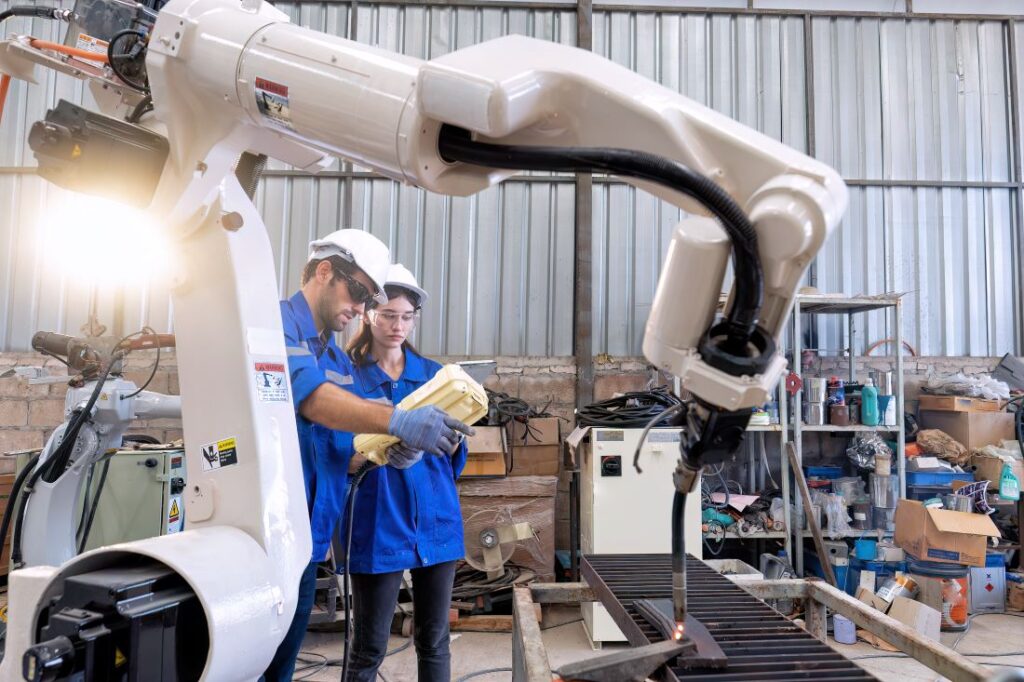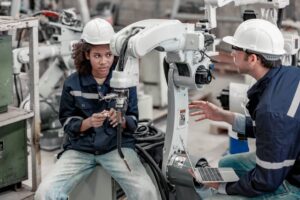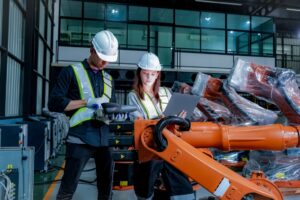The decision to integrate robots and vision-enabled systems into the manufacturing process marks a pivotal moment, especially for smaller companies seeking the promised benefits of enhanced productivity. Traditionally, the deployment of robotics was seen as a complex and costly endeavor, often accessible only to larger corporations with significant resources. This left smaller companies on the sidelines, unable to tap into the transformative power of automation.
In recent years, advancements in robot technology have shattered these barriers. Robots are now easier to program, more mobile, and cost-effective, leading to a surge in deployment numbers across various industries. As technology evolves, the focus has shifted towards off-the-shelf solutions – purpose-built robotic systems designed for specific applications or tasks. This shift aims to democratize robotics, making them more accessible to a broader range of businesses, while targeting common applications that can benefit the most from technological innovation.
Off-the-Shelf Solutions: Streamlining the Future
The move towards off-the-shelf solutions represents a game-changer in the world of robotics. This approach involves developing and delivering robotic systems tailored for specific applications, eliminating the need for extensive customization with each installation. This not only enhances cost-effectiveness but also significantly reduces deployment time, offering businesses a quicker and more efficient experience.
Applications Redefined: From Bin Picking to Painting
Consider applications ideal for robotics – those that reduce risks to humans in tasks involving hazardous substances, repetitive lifting, or dangerous environments. Bin picking, a traditionally manual task, is now witnessing the rise of off-the-shelf solutions. These systems, equipped with purpose-built grippers, ensure consistent, repetitive accuracy in tasks such as picking, assembling, packing, or sorting.
Palletizing and depalletizing, particularly of large, bulky items, is known for its physical toll on workers. Automation solutions for these tasks, available in collaborative configurations, take on heavy lifting and positioning, reducing the risk of injury. Whether it's packing or unpacking in warehousing, food preparation, or manufacturing, these systems excel in strenuous, repetitive lifting and moving.
Safer and More Efficient: Robotic Painting and Dispensing
Consistency in applying paint and finishes is crucial for brand value. Robotic painting solutions, traditionally common in the automotive industry, are now expanding to cover tasks like road striping and interior painting. Paired with vision and navigation, these systems ensure precision and efficiency while reducing exposure to harmful fumes.
Dispensing systems, another area witnessing a surge in automation, are becoming turnkey solutions for fluid and adhesive dispensing. Whether in pharmaceuticals, manufacturing, lubrication, or sub-assembly processes, these robotic systems guarantee consistent dispensing without errors, producing high-quality products with minimal waste.
Exploring the Future: Off-the-Shelf Robotics and Vision Solutions
The trend towards off-the-shelf solutions extends beyond the mentioned examples, encompassing various applications, including common inspection tasks. As industries increasingly adopt robotics and vision technologies, the availability of solutions is expected to rise, making them more cost-effective and applicable to a broader range of market segments. If your process involves consistently repetitive tasks or tasks prone to human factors, it's the perfect time to explore readily available off-the-shelf automation options. Welcome to the future of manufacturing, where innovation meets accessibility and efficiency.
How do you envision the future of robotics and vision technology shaping your industry?
Share your thoughts on the transformative potential of off-the-shelf solutions and their impact on efficiency and worker safety. Have you encountered challenges in deploying robotics, or do you see exciting opportunities ahead? We invite you to join the conversation and contribute your insights to the ongoing dialogue on the evolution of manufacturing.




